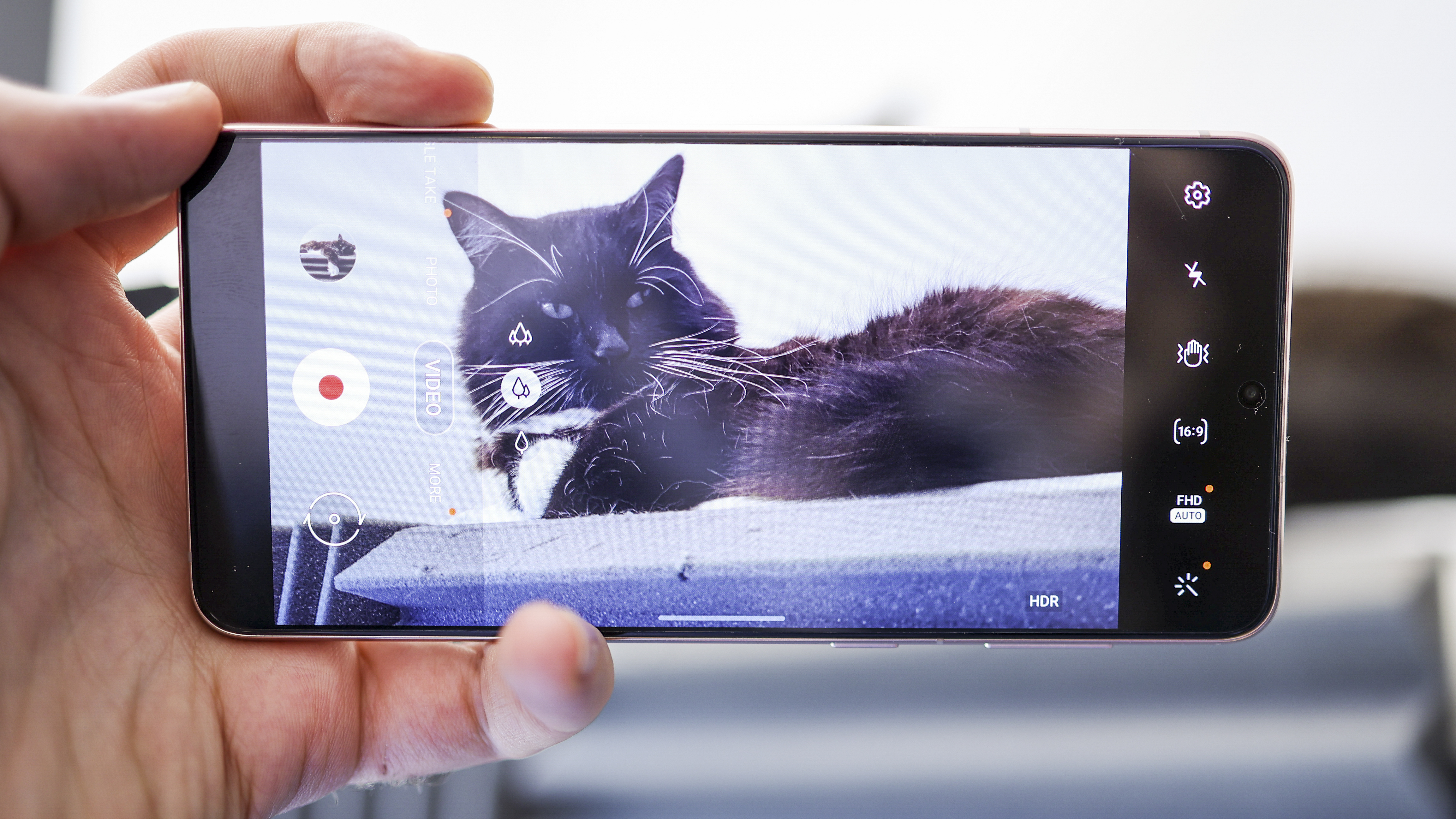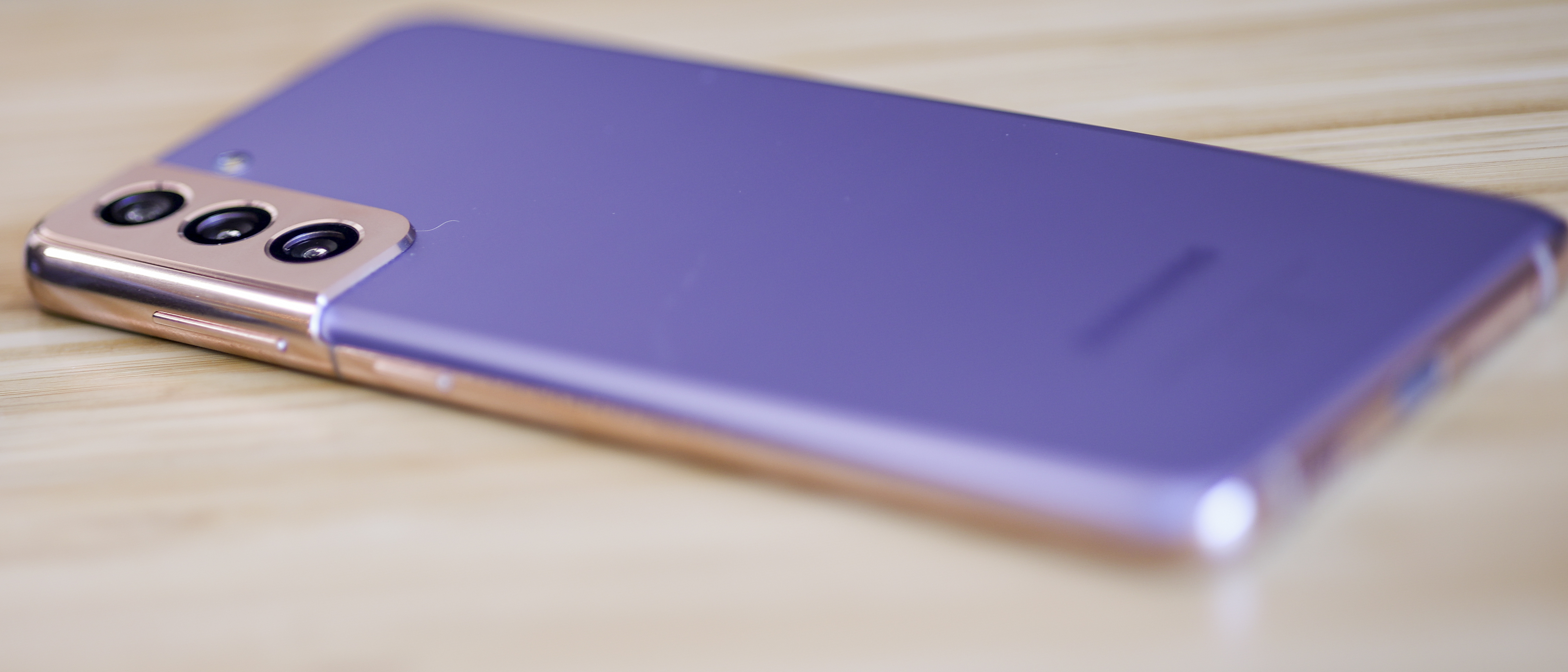Digital Camera World Verdict
The Samsung Galaxy S21 Plus is a great all-around smartphone, but at around $1000 / £949, it isn’t much cheaper than the S21 Ultra and loses out on almost all its bells and whistles. In day-to-day use, it’s performance is on-point, so if you find it at the right price, it won’t disappoint. Like the S21, the S21 Plus’s camera is also dependable for most scenarios, but when you’re paying this much, it’s not unreasonable to expect a bit more sparkle, some new hardware, and maybe even a telephoto zoom.
Pros
- +
Good looking, slender smartphone
- +
Big, bright, smooth screen
- +
Flagship power and smooth UI
Cons
- -
2020 camera hardware
- -
No optical zoom
- -
No expandable storage
Why you can trust Digital Camera World
Samsung’s Galaxy S21 series has been incredibly well-received, with the top-tier S21 Ultra scoring full-marks and the Galaxy S21 not far behind. There’s a lot Samsung is doing right with this year. Sitting in the middle between both in terms of size and price, the Galaxy S21 Plus combines S21 specs with a larger display and a bigger battery. It also sports a higher price, and coming in at just shy of $1,000/£1,000, needs to be pretty darn special to win your cash.
On paper, it’s an instant tough sell. With its 6.7-inch display, it’s a flagship size, but its 1080p resolution is a step down from last year’s S20 Plus. Sporting the exact same camera setup, and a plastic back, we’re left wondering why you’d even consider it when its predecessor is trumping some of its headline specs. There’s also tough competition from the much cheaper Galaxy S20 FE, OnePlus 8T and Xiaomi Mi 11.
Not out for the count, the S21 Plus does sport a few new highlights, including a 2021 power with a Qualcomm Snapdragon 888 in the US and China, and Exynos 2100 in other regions. Add to the mix a 4800mAh battery as well as 128GB or 256GB, and things are looking up.
Design and screen

Samsung combines a 6.7-inch screen size with a glass, plastic, and metal body on the S21 Plus. This makes for a large phone that stops short of being unwieldy.
At 7.8mm thin, despite its ample display, the S21 Plus still has an air of elegance to it, and available in Phantom Black, Silver, Violet, Pink, Gold, and Red, its frosted back looks much better than last year’s fingerprint-loving finish. Samsung took a risk switching our from glass to plastic, and we’re not mad about it. Plus, it’s one less surfact to smash. That said, it doesn’t feel as premium as the frosted glass around the back of the Galaxy Note 20 Ultra.
Combining a 1080 x 2400 resolution with Dynamic AMOLED 2X technology, a 120Hz refresh rate and HDR10+ capabilities, the S21 Plus’s display is strong. It falls short of being pixel-peeper levels of stellar thanks to its 394 pixels-per-inch pixel density, which, compared to the S20 Plus, which clocked in at over 500PPI, is a marked step down.
With a 1300-nit peak brightness, punchy colors, deep, inky blacks and an adaptive refresh rate that scales between five and 120Hz, clarity aside, you won’t find a better picture, and fans of flat screens will also enjoy the lack of curved edges.
The best camera deals, reviews, product advice, and unmissable photography news, direct to your inbox!
IP68 water and dust resistance mean the S21 Plus can also handle an accidental dunk, so if you can learn to love the slightly lower resolution screen than some of the competition, and a plastic back, the S21 Plus’s look, feel and durability could still float your boat.
Cameras

The Samsung Galaxy S21 Plus’s main camera is powered by a familiar 12 MP sensor with an f/1.8, 26mm lens. Its 1/1.76” sensor sports 1.8µm pixels, locking onto subjects with Dual Pixel PDAF. It also has OIS, making the hardware the same as found on last year’s S20 Plus and S20 FE.
The S21 Plus’s ultrawide camera combines an f/2.2, 13mm, 120˚ lens with a 12MP, 1/2.55" sensor. As for the telephoto camera, there’s a 64 MP (1/1.72") sensor with a 29mm focal length (only slightly further-reaching than the main camera). With an f/2.0 aperture, however, it lets more light in than most telephoto cameras, and with its high resolution and 0.8µm pixels, not to mention OIS, could deliver some decent digital crops.
The 10 MP, f/2.2, 26mm selfie camera is a familiar front snapper. We’ve seen it on umpteen Samsung smartphones, with its 1/3.24" sensor, 1.22µm pixels, and Dual Pixel PDAF. We, therefore, know it works well, but won’t tread new turf from a hardware point of view.
When it comes to shooting modes, highlights include an interface you can totally switch out and make your own. Video fans will enjoy the new Director’s View mode, which displays a preview of three focal lengths so you can jump cut between cameras mid-record in a clean, intentional way. The S21 Plus, as with the whole family also shoots RAW photos.
Camera performance
Samsung has updated its photo tuning for the 2021 line of Galaxy phones, and it’s a pleasant surprise, with a number of Samsung staples like overexposing and radioactive saturation having been tapered a bit more than usual.
The detail in photos taken on the Galaxy S21 Plus across wide and telephoto ranges are impressive, with well-lit indoor shots and portraits looking strong. The phone’s portrait mode is also great, though macro performance is weak. With no optical zoom, we wouldn’t recommend using the telephoto camera beyond a three times zoom range, though for casual things like Instagram stories and WhatsApps, you can take the hit on quality for passable shots up to roughly 10 times zoom if the light is right.
With color vibrancy and saturation both more tapered than on previous generation Galaxy phones, shots from the S21 Plus still look realistic. While it doesn’t pull the depth of field captured by the S21 Ultra, its shots occasionally have a more natural feel to them, owing to the different main sensor, which is a pleasant surprise.
Finally catching up with Huawei, Samsung’s S21 Plus automatically switches to night mode when it detects a dim scene. Low-light photos also look impressive when matched with a steady hand, with noise handled relatively well. It isn’t class-leading, with Apple and Huawei’s night photos edging ahead though.
As for the S21 Plus’s selfie camera, combining autofocus and 4K video capture, it specced out well, and with a reliable background defocus effect and decent quality, it does what it needs to do.
Video shot on the S21 Plus is captured at up to 8K resolution (24fps), or 4K (60fps), giving you more range than most — handy for videographers who need detail and the option to crop into their footage when shooting on a bright day or with ample lighting. The phone’s ultrawide camera shoots the most impressive, steadiest FullHD video of the bunch, while low-light video is unsurprisingly the Achilles heel of S21 Plus, and indeed all smartphones.
Samsung Galaxy S21 Plus: Additional specs

As with most Galaxy flagships, the S21 Plus is powered by an Exynos 2100 chipset globally, with the exception of the US and China, where the Samsung Galaxy S21 Plus features a Qualcomm Snapdragon 888. Whichever option you get, it’s powerful and fast, and even supports a desktop experience.
DeX is Samsung’s desktop interface. Plug any of the Galaxy S21 line into a macOS or Windows computer, and the creates a desktop interface on-screen. It also fires up when you hook the phone into a monitor too, and it’s excellent, performing as an adhoc personal computer.
Running Android 11, app support is excellent on the S21 Plus, and Samsung’s One UI 3.1 powers a host of experiences, not least of all a smooth day-to-day interface. With either 128GB or 256GB of storage, the S21 Plus gives you plenty of space for your stuff, though doesn’t feature microSD card support, which is a first for the line.
Rounding off, the phone’s 4800mAh battery is huge and comfortably makes it through a full day. With 25W wired charging, it isn’t a speed demon like the OPPO Find X2 Pro and its 65W charging, however, with 15W wireless charging and 4.5W reverse wireless, at least it’s fully featured.
Samsung Galaxy S21 Plus: Verdict

The Galaxy S21 Plus is a good phone, but it’s too expensive when phones like the Galaxy S21 FE are so good, and so similar. With Samsung’s decision to opt for a lower resolution screen than last year in the S21 Plus, and a plastic back panel, we would have hoped for a lower price tag. Additionally, the cameras add nothing new from a hardware point of view.
Having said all that, we don’t have any complaints about the day-to-day experience of using the S21 Plus. It’s fast, looks good, its screen is great and it delivers excellent battery life. With a competent camera setup for all but avid telephoto fans, if you’re smitten by its size, styling, and that flat screen, it’s a great buy — but the S21 Plus is pricey, it isn’t the best camera phone of 2021, and you can get more for less in other mobiles.
Read more:
• Best camera phone in 2021
• Best budget camera phones
• Best iPhone for photography
• Best burner phone
• Best 5G phone
• Best phablets
• Best flip phones
• Best phablets
Basil Kronfli is a freelance technology journalist, consultant, and content creator. He trained in graphic design and started his career at Canon Europe before moving into journalism. Basil is also experienced in video production, independently running the YouTube channel TechEdit, and during his time at Future, he worked alongside the Digital Camera World team as a senior video producer.








